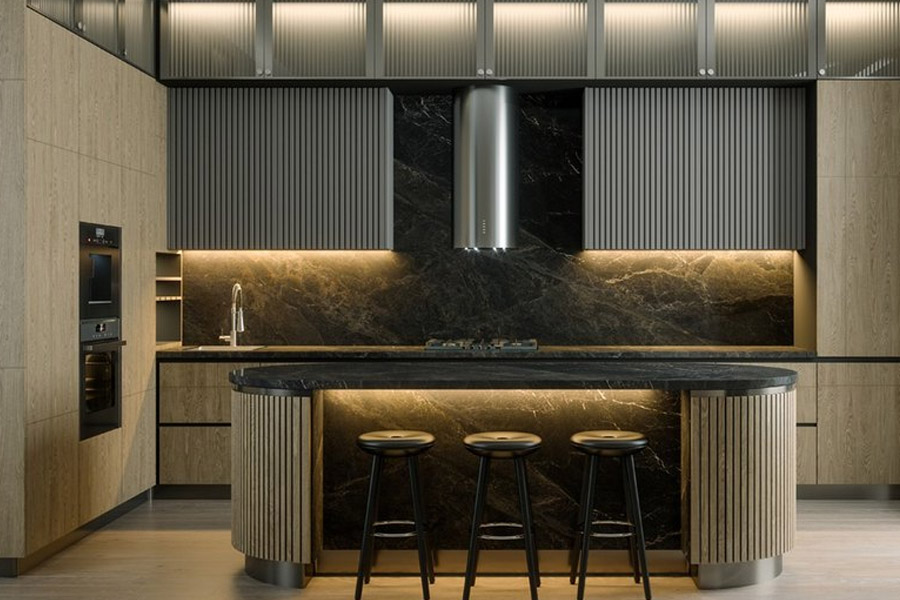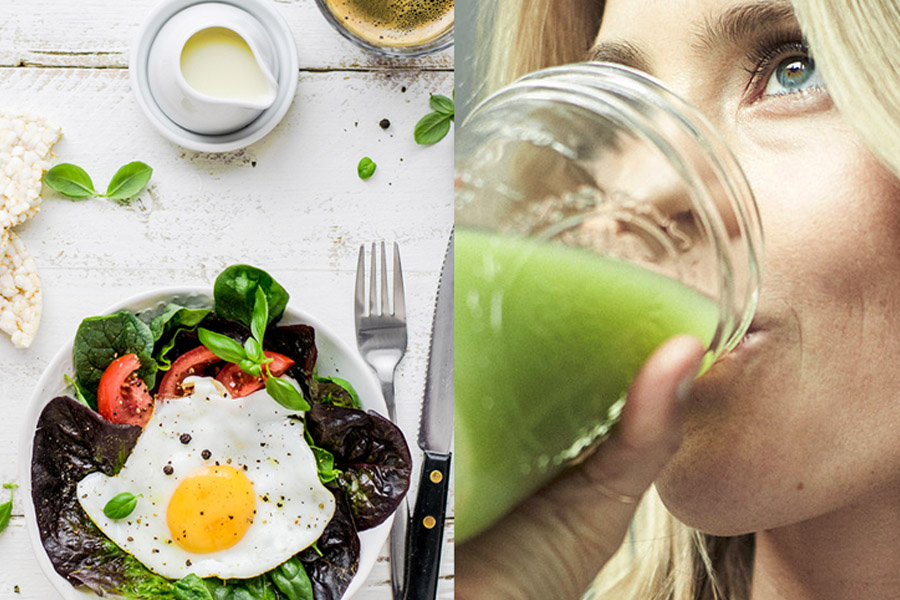Now Reading: How Small Changes Can Make a Kitchen Feel Brand New
-
01
How Small Changes Can Make a Kitchen Feel Brand New
How Small Changes Can Make a Kitchen Feel Brand New

Imagine stepping into your kitchen at dawn, the first light filtering through the window like a soft spotlight on a stage set for everyday magic. You’ve got that familiar space, worn in all the right ways, but it’s starting to feel a bit stale, like a favorite movie you’ve watched one too many times. The good news? You don’t need to call in the demolition crew or empty your savings for a blockbuster remodel. Sometimes, it’s the subtle tweaks—the kind that whisper rather than shout—that turn the ordinary into something fresh and inviting. Picture this: a kitchen that feels like a cozy café scene from an indie film, where every corner tells a story of thoughtful evolution. We’re diving into those clever, budget-friendly shifts that pack a punch, drawing from tried-and-true design wisdom with a dash of playful experimentation. Let’s roll up our sleeves and explore how these small changes can rewrite your kitchen’s script.
Refresh the Colour Scheme
Color has this incredible power to shift the mood of a room, doesn’t it? It’s like swapping out the soundtrack of your life—suddenly, everything feels a little more vibrant or serene. Start with the walls: a fresh layer of paint can transform a tired space into a welcoming haven. Opt for soft neutrals if you’re after that timeless elegance, or venture into muted greens and blues for a touch of earthy charm that nods to nature’s palette. I’ve seen kitchens go from drab to dreamy with just a weekend’s worth of rolling and brushing, the air thick with the scent of new beginnings.
But don’t stop there. Your cabinetry holds so much potential. Instead of ripping them out, grab some sandpaper and paint to reface those doors. Imagine matte whites brightening up dark wood, or deep navies adding a sophisticated edge. It’s a DIY adventure that feels like uncovering hidden treasure in your own home. And for those pops of personality? Scatter colorful accents around—think vibrant vases catching the light on the windowsill, or tea towels in bold patterns draped over handles. These little bursts keep things lively without overwhelming the senses, creating a layered look that’s as fun to assemble as it is to live with. Research shows that color psychology plays a big role here; warmer tones can make the space feel cozier for family gatherings, while cooler shades promote a calm, focused vibe for solo cooking sessions.
Update the Hardware
Ah, hardware—the unsung heroes of kitchen design. They’re like the jewelry that completes an outfit, turning something basic into a statement. Swapping out old knobs and pulls is one of those quick wins that surprises you with its impact. Picture your cabinets dressed up in sleek brushed brass for a modern twist, or matte black for that edgy, urban feel. It’s amazing how these tiny elements can pull the whole room together, making it look polished and intentional.
If rustic is more your scene, hunt for vintage-inspired pieces in bronze or aged copper—they add warmth and a storybook charm, like props from a countryside film set. The process is straightforward: a screwdriver, some measuring, and you’re done in an afternoon. But the effect? Transformative. Suddenly, opening a drawer feels luxurious, and guests can’t help but notice the upgrade. Pair this with matching hinges for extra cohesion, and you’ve got a kitchen that whispers elegance without saying a word. Insiders know that mixing metals can add eclectic flair, but starting simple ensures harmony.
Improve the Lighting
Lighting sets the scene like nothing else—it’s the director’s tool for mood and drama in your kitchen narrative. If you’ve been relying on that harsh overhead fixture, it’s time to layer things up for depth and versatility. Under-cabinet task lights? They’re game-changers, illuminating countertops with a focused glow that makes chopping veggies feel like a spotlight performance. Ambient options, like recessed ceiling lights, provide that soft, even wash for everyday ease.
Then there’s accent lighting to highlight your favorites—a sleek splashback or open shelves stacked with artisanal jars. Swapping to warmer LED bulbs can cozy up the space instantly, banishing those clinical fluorescents. Imagine evenings where pendant lights over the island cast a golden hue, turning dinner prep into a cinematic ritual. Studies back this up: better lighting reduces eye strain and enhances safety, while dimmable features let you dial in the perfect ambiance for everything from rushed mornings to lingering late-night chats.
Upgrade Your Splashback
The splashback is often the kitchen’s backdrop, a canvas waiting for your creative stroke. Ditching outdated tiles for something fresh can redefine the entire area, like updating the set design in a beloved series. Subway tiles bring that clean, enduring appeal—simple lines that never go out of style. Or, if you’re feeling adventurous, patterned ones inject playfulness, perhaps with geometric motifs or subtle florals that add sophistication without chaos.
For those on a budget or in rentals, peel-and-stick options are a revelation: easy to apply, removable, and full of variety. Envision a mirrored splashback reflecting light around the room, making it feel larger and more dynamic. This upgrade not only protects walls but elevates aesthetics, turning a functional necessity into a focal point. Pros swear by materials like glass or stainless steel for durability and easy cleaning, ensuring your choice stands the test of time and trends.
Swap Out Tapware and Fixtures
Your kitchen tap is more than a utility—it’s a star player in daily routines. Changing it out can blend style and function seamlessly, like upgrading from standard props to custom ones. Go for sleek chrome if minimalism calls to you, or brushed nickel for subtle sheen. Matte black? That’s the bold choice for a dramatic flair that commands attention.
Coordinate with soap dispensers and sink accessories for a unified look that feels designer-curated. Touchless models add modern convenience, reducing mess and germs—perfect for busy households. This swap is often straightforward, requiring basic tools and a bit of plumbing know-how, but the payoff is immediate: water flows smoother, and the sink area sparkles anew.
Reorganise and Declutter
Clutter can dim even the brightest kitchen’s shine, turning it into a chaotic set rather than a serene stage. Clearing the decks isn’t about minimalism for its own sake; it’s about creating flow. Stash rarely used appliances in cabinets, freeing counters for actual work. Drawer organizers tame the utensil jungle, making everything findable in a flash.
Pull-out shelves in cupboards? They’re like hidden drawers in a mystery plot, revealing forgotten items with ease. A decluttered space breathes easier, looks larger, and invites creativity—think effortless meal preps without the frustration. Experts note that organization boosts efficiency, cutting down on wasted time and stress.
Refresh Soft Furnishings
Soft furnishings sneak in texture and comfort, softening the hard edges of cabinets and counters. New curtains or blinds can frame windows like elegant borders, filtering light with grace. Seat cushions on stools add plush invitation, while a rug underfoot grounds the space with pattern and warmth.
Choose washable fabrics that match your palette—linens in soft grays or cottons with subtle stripes. This refresh brings coziness, making the kitchen a spot for lingering, not just labor.
Add Greenery
Greenery breathes life into the kitchen, like adding living extras to your home’s cast. Potted herbs on the sill offer beauty and utility, snipped fresh for dishes. Hanging plants cascade softly, or a bold pot on the counter softens stark lines.
Low-maintenance varieties thrive in varying light, purifying air and boosting mood as research suggests. It’s a simple way to connect indoors with the outdoors.
Focus on One Statement Piece
Sometimes, one bold move steals the show. A striking pendant light over the island draws eyes upward, illuminating with flair. Open shelving displays cherished items artfully, or new bar stools introduce color and comfort.
This focal point creates impact without overhaul, giving your kitchen that curated, insider edge.
FAQ
How often should I repaint my kitchen walls?
Repainting every 3-5 years keeps things fresh, depending on wear from cooking steam and traffic. A quality, washable paint extends this timeline while maintaining vibrancy.
Can updating hardware really modernize old cabinets?
Absolutely—new knobs and pulls in contemporary finishes can make dated cabinets look current and cohesive. It’s a low-cost tweak with high visual return.
What type of lighting is best for small kitchens?
Layered lighting works wonders: under-cabinet tasks for function, ambient for overall glow, and accents to create illusion of space. Warm LEDs enhance coziness without overwhelming.
Are peel-and-stick splashbacks durable?
They’re surprisingly tough for everyday use, resisting splashes and easy to clean. Ideal for temporary updates, though permanent tiles suit heavy-duty needs.
How do I choose the right plants for my kitchen?
Opt for low-light tolerant ones like pothos or snake plants if sunlight is scarce. Herbs like basil thrive near windows, adding scent and flavor.
What’s the easiest way to declutter kitchen counters?
Start by relocating non-essentials to storage, then use organizers for what’s left. This clears space instantly, making the area more functional and serene.
Do soft furnishings need to match perfectly?
Not at all—mixing textures and subtle colors adds depth and personality. Focus on easy-care materials that complement your scheme for effortless style.
Is a statement piece worth the investment?
Yes, as it elevates the entire room without full changes. Choose something versatile that aligns with your taste for lasting appeal.




















